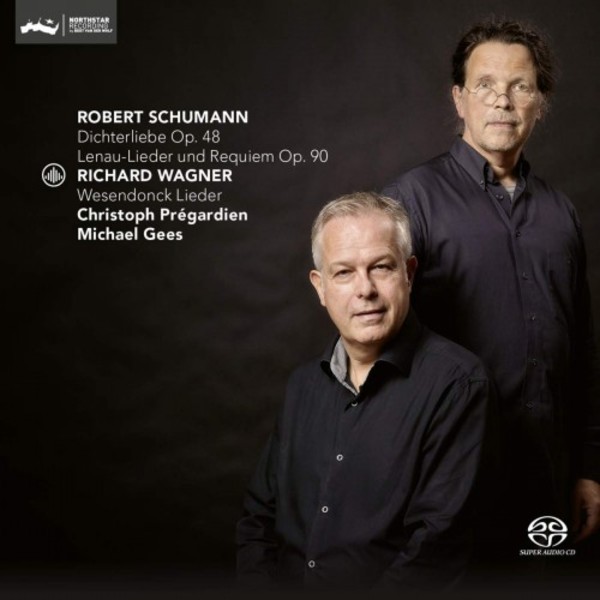
Schumann - Dichterliebe, Lenau-Lieder und Requiem; Wagner - Wesendonck Lieder
£14.73
In stock - available for despatch within 1 working day
Despatch Information
This despatch estimate is based on information from both our own stock and the UK supplier's stock.
If ordering multiple items, we will aim to send everything together so the longest despatch estimate will apply to the complete order.
If you would rather receive certain items more quickly, please place them on a separate order.
If any unexpected delays occur, we will keep you informed of progress via email and not allow other items on the order to be held up.
If you would prefer to receive everything together regardless of any delay, please let us know via email.
Pre-orders will be despatched as close as possible to the release date.
Label: Challenge Classics
Cat No: CC72788
Format: Hybrid SACD
Number of Discs: 1
Genre: Vocal/Choral
Release Date: 11th October 2019
Contents
Artists
Christoph Pregardien (tenor)Michael Gees (piano)
Works
Dichterliebe, op.48Gedichte (6) und Requiem, op.90
Wesendonck-Lieder (5), WWV91
Artists
Christoph Pregardien (tenor)Michael Gees (piano)
About
Robert Schumann was the most confessional of composers and many of the songs from his great Liederjahr of 1840 were in essence love songs to Clara Wieck. In Dichterliebe (‘Poet’s Love’) op.48, he turns again to the pithy verses of Heinrich Heine’s Buch der Lieder. On one level, Dichterliebe can be heard as his most piercing recreation of the fluctuating emotions he had experienced during his long courtship of Clara.
Characteristically of Schumann, it is the piano that controls the musical narrative in Dichterliebe. Characteristic, too, of Schumann’s 1840 songs is the piano postlude that encapsulates and deepens a song’s meaning. Dichterliebe takes this to the furthest extreme.
In August 1850, Schumann set six poems by the unstable and ultimately insane Austrian poet Nikolaus Lenau (1802-1850), whom he had briefly met in Vienna in 1839. Like Schumann and Wolf, Lenau spent his last years in an asylum, his mind destroyed by syphilis. Schumann was ill and dejected at the time, and his mood is reflected in these poems of satiety, oppressiveness and transience. As a tribute to the dying poet (who he initially believed had already died), Schumann appended to the Lenau group one of his rare religious songs: Requiem, a setting of Héloïse’s lament for Peter Abelard. For this quasi-operatic music of solemn grandeur and mounting exaltation, Schumann devised a swirling keyboard accompaniment that takes its cue from the poem’s image of angelic harps.
During the autumn of 1857 Wagner began a set of five songs to poems by Mathilde Wesendonck, written in evident imitation of Wagner’s hothouse Tristan manner – one of the very rare occasions when he set words other than his own. The Wesendonck Lieder, as they are now known, were revised and completed in 1858, and first performed as a cycle in July 1862 at a country house belonging to the publisher Franz Schott. Each of the songs shares with Tristan the concept of ‘endless melody’, a saturated, dissolving chromaticism – the musical emblem of unstilled desire – and a feverish, oppressive atmosphere.
Error on this page? Let us know here
Need more information on this product? Click here